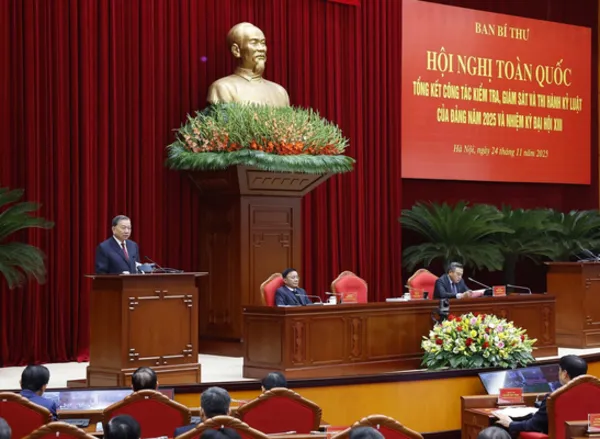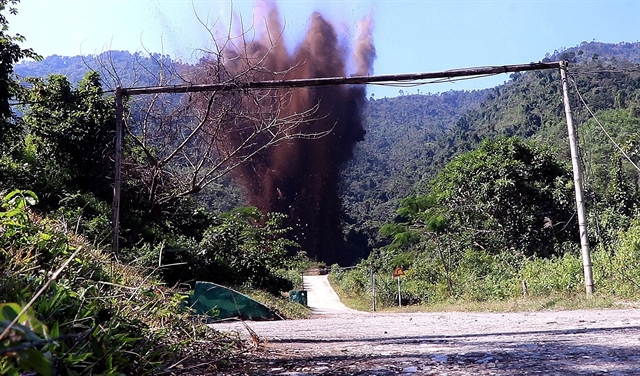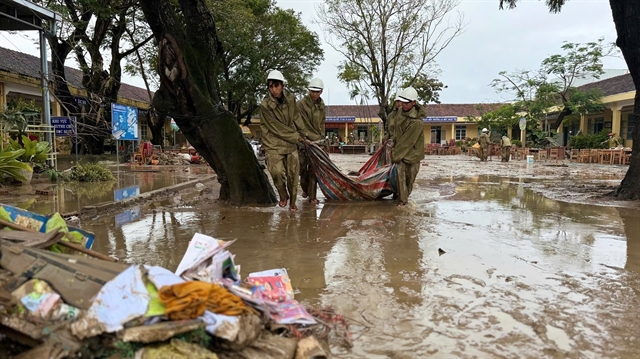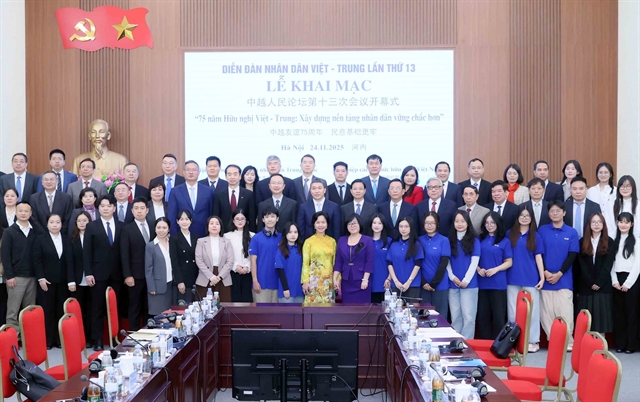 Sunday/Weekend
Sunday/Weekend

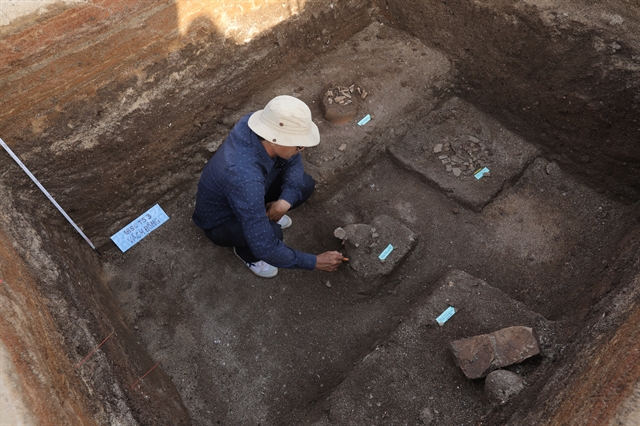 |
| An archaeologist checks a jar tomb that was excavated in Quảng Ngãi Province. The Sa Huỳnh archaeological site of the Sa Huỳnh Culture, dating back 2,500-3,000 years ago in the province, was recognised as a National Special Heritage. Photo courtesy of Đoàn Ngọc Khôi |
The Sa Huỳnh archaeological relics in the central province of Quảng Ngãi's Đức Phổ Town has been recognised as a National Special Heritage by the Prime Minister, highlighting the unique value of ancient Sa Huỳnh Culture – one of the three civilizations of Việt Nam – dating back 2,500 to 3,000 years.
The Government's decision signed on December 29 last year, once again proves the importance of the preservation of culture and heritage in the central coastal provinces, mapping out sustainable development in the near future.
Sa Huỳnh archaeological site was one of five special national heritages recognised by a decision by the Prime Minister in 2022 – Rộc Tưng-Gò Đá archaeological site (Gia Lai Province), the architectural art site of Hương Canh communal house complex (Vĩnh Phúc Province), the historical relic of King Mai Hắc Đế Temple (Nghệ An Province), and the Ấp Bắc victory monument (Tiền Giang Province).
The site, which covers Phổ Thạnh and Phổ Khánh wards in Đức Phổ Township, 60km south of Quảng Ngãi City, was first discovered by French archaeologist M. Vinet in 1909, and hundreds of burial jars were then found in different excavations in the coastal area of Sa Huỳnh in 1909-1923.
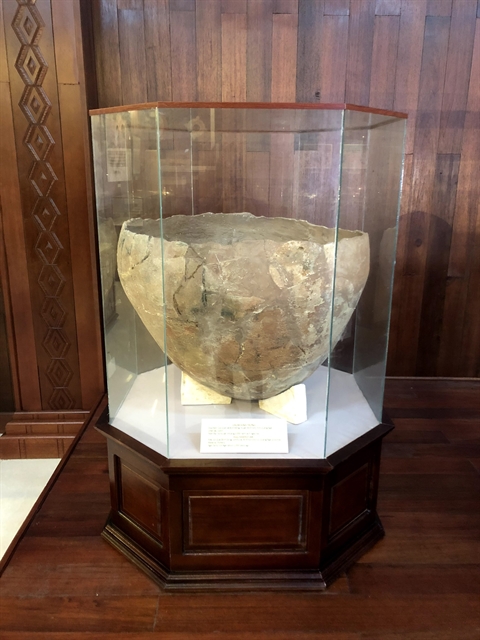 |
| An urn is displayed at the Sa Huỳnh Culture Exhibition Hall in Đức Phổ Town of Quảng Ngãi Province. About 400 burial jars were found in Sa Huỳnh between 1909-1923. Photo courtesy of Kiều Nguyễn |
Bùi Văn Liêm, of the Việt Nam Archaeology Institute, said vestiges of the Sa Huỳnh Culture were found both in the mainland, sea and islands of the central and Central Highlands region, and Quảng Ngãi was the centre of the Sa Huỳnh Culture.
He said many antiquities related to tombs of the Sa Huỳnh Culture had been excavated by Western archaeologists and Vietnamese over 100 years ago when the Sa Huỳnh Culture was unveiled in 1909.
Nearly 400 funeral urns were found in the area in 1923 alone.
In 1997, five relic sites -- Phú Khương, Gò Ma Vương (Ma Vương Hilllock), Thạnh Đức, An Khê lagoon, An Khê channel and Champa culture area – in Long Thạnh Village of Phổ Thạnh and Phổ Khánh were protected as National Relics.
Phạm Thị Ninh, from the Việt Nam Association of Archaeology, said at least 2 million fragments of shells and ornaments were excavated from the Lý Sơn Islands off the coast of Quảng Ngãi and mainland including Sa Huỳnh.
About 500 documents, antiquities and fragments from excavations in 1909, 1923 and 1978 are displayed at the exhibition halls in Sa Huỳnh.
The 3.5km long and 1km wide An Khê Lagoon is believed to have formed during the Flandrian interglacial period from 6,000 to 7,000 years ago.
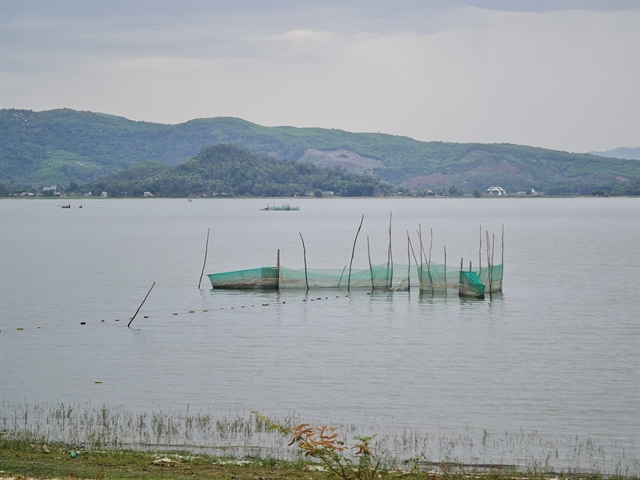 |
| An Khê Lagoon in Đức Phổ Town -- 60km south of Quảng Ngãi City -- is included in the newly recognised national special heritage for strict protection. Photo courtesy of Trần Lan Anh |
French archaeologists excavated the site to find artefacts from the Sa Huỳnh Culture in 1909, but the bottom of An Khê Lagoon has not had any archaeological excavation since.
An Khê Lagoon, the new Gò Cỏ eco-tour village, Sa Huỳnh salt fields, and the exhibition centre of antiquities of the Sa Huỳnh Culture in the area will help build a base for sustainable development on the Sa Huỳnh Culture complex, including the area that was first excavated by archaeologists more than 100 years ago.
Đoàn Ngọc Khôi, deputy director of Quảng Ngãi Museum, said the recognition of the special heritage site would help preserve the lagoon and the Sa Huỳnh Culture for eco-tours and attract international archaeological researchers.
The Sa Huỳnh relic site was included in the Lý Sơn-Sa Huỳnh Global Geo-Park dossier developed by scientists, conservationists and archaeologists in 2015-2021, earning the UNESCO global geo-park recognition. VNS

